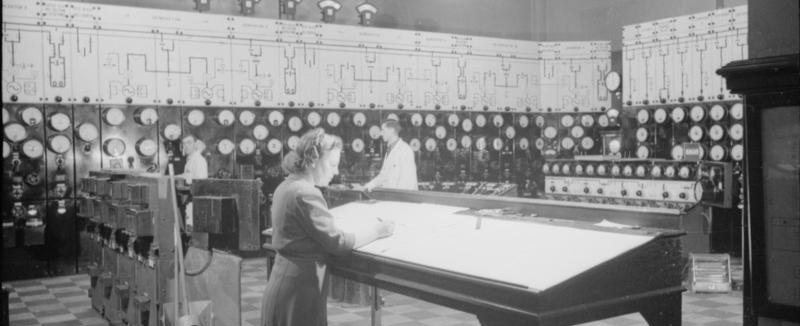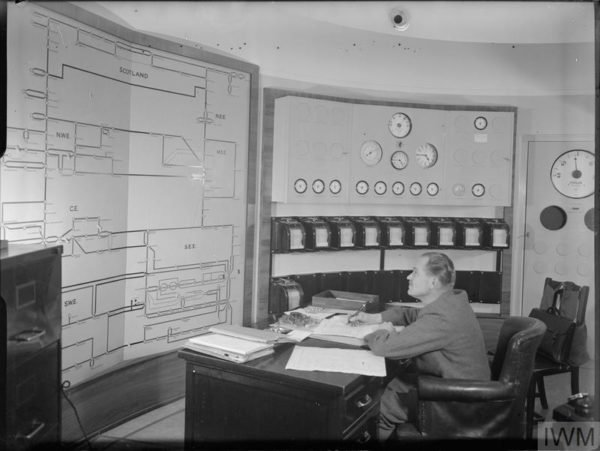
As part of our research into ‘digital twins’, ODI Technical Researcher Jared Keller takes a look back at the evolution of large technical systems to understand the forces that influenced their development, and how those same forces might now impact the development of networks of digital twins
At the turn of the 20th century, a group of British politicians aligned themselves against two bills then working their way through the Houses of Parliament. One bill aimed to centralise London’s electrical grid. The other sought to place control of London’s electrical supply in the hands of a private company. Both bills, according to this group, were politically and culturally impractical. Both bills failed.
A century later, however, the political, cultural and technological winds had shifted as England and Wales entered the 21st century with a centralised electrical grid, owned and operated by a private company.
Things change – society, politics and technological systems included.
Today, the UK’s infrastructure and construction sectors are undergoing their own transformations, led, in part, by the Digital Framework Task Group (DFTG) - a group set up to deliver, among other things, the National Digital Twin programme.

In the context of the DFTG’s intention to steward the development of a ‘national digital twin’ over the next ten, thirty, fifty years, the history of other similarly large and complex technical systems, and the forces that shape their development, is worth examining. After all: to anticipate and mould the future you must understand the present, but to understand the present you must interrogate and interpret the past.
A ‘digital twin’ is a digital model of a physical asset. The national digital twin aims to be a federation of connected digital twins across all sectors and at a national scale.
Our research identified three lessons from the history of large technical systems:
- there is no one right way to build a technological system
- values and principles that at the moment feel foundational are likely to be reassessed down the line
- as large technical systems mature it can become comparatively more difficult to make course corrections.
Keeping these three lessons in mind should help people and organisations to build, connect and network digital twins in ways that facilitate collaboration now, and in the decades to come.
Lesson #1: There is more than one way to paint a sunset
Technologies and the complex systems of infrastructure, standards, regulations and institutions that grow up around them, do not develop according to some internal logic leading toward an ideal form. Not only are there are many technical decisions made based on given preferences, needs, aims, etc, there are also many non-technical or social forces that play a role in shaping the structure, direction and goals of a developing system. Crucially, this relationship between society and technology is one of mutual interaction and influence. To paraphrase the historian of science and technology, Thomas Hughes: there is no one right way to paint a sunset; no one right way to build, connect or network digital twins.
The development of electrical light and power systems serves as a useful historical case study.
As electrical consumption rose during the late 19th and early 20th centuries, the electrical grids in Chicago, London and Berlin took on very different topologies in response to differing views about centralised versus decentralised authority, public versus private ownership (or benefit) and the amount of steering necessary to guide the development of large technical systems.
By 1920, for instance, Chicago had a centralised system of production and distribution composed of a few large generating stations owned and controlled by a single private firm, Commonwealth Edison Company. Berlin, on the other hand, had a centralised system owned and operated by commercial concerns but regulated by a public body, the City of Berlin, which provided direction and strove to ensure that the new utility functioned as a public service. In contrast, by 1913 London had a decentralised system made up of over 70 smaller generating stations operated by 65 public bodies with little unified leadership or direction.
The differences between these three systems were not due to factors inherent to the technology itself, but were the result of choices that expressed fundamental political and cultural values. Indeed, when a young engineer appeared before parliament in 1905 and spoke enthusiastically about the technical merits of his plan to overhaul London’s decentralised system, David Lloyd George, then president of the Board of Trade and future Prime Minister, quipped (with not a little condescension), “My dear young friend, this is not a question of engineering, it is a question of politics.”
Thus, in Chicago, a disinterested political class allowed the major commercial concerns to develop the grid as they saw fit, resulting in a centralised, monopolistic system; in Berlin, a tradition of Prussian civil service helped produce a system that placed production and distribution under the control of private enterprise while delegating regulatory and stewardship authority to the City of Berlin; and in London, proponents of local government and foes of private ownership combined to produce a decentralised and publicly-controlled system.
Three cities – three very different ways of building and connecting electrical grids.
Our main takeaway for the future of digital twins: there is no one right way to build a network of digital twins (or a national digital twin) and divergent futures are entirely possible – not only across different different countries, but across different regions or industries within a single country as well.
Lesson #2: The only constant is change
During our research into what is likely to happen as networks of digital twins develop we drew two complementary, though seemingly contradictory, lessons from the history of large technical systems: things will change (lesson #2), and things will stay the same (lesson #3).
To take the first point, over the next 30 years and beyond, things are destined to change. New technologies will emerge, standards will be updated, new policies and regulatory regimes will be put in place and society will evolve. A change in one of these realms is likely to have an influence on, or precipitate changes in the others.
One fundamental belief informing the DFTG’s Gemini Principles, for instance, is that ‘numerous federations of digital twins’ would be preferable to a fully-centralised or fully-decentralised national digital twin. The history of large technical systems suggests that even this may change.

As mentioned above, in the early 20th century, Britain had a highly decentralised electrical grid, with 65 different electrical utilities in London alone. In 1926, however, the Central Electricity Board was created, which set about rationalising and centralising the system, culminating with the establishment of the National Grid in 1935. The new ‘national gridiron’ divided Britain into standard grid areas with control rooms in seven major locations. Before the end of the 20th century, the grid was centralised even further when the seven control centres were replaced by the Electricity National Control Centre – a single, central control centre based in Wokingham.
Similarly, by the end of the 20th century the electrical industry had transitioned multiple times between public and private ownership – having been nationalised in 1947, then privatised in 1990.
Our main takeaway for the future of digital twins: as circumstances change over the next ten, thirty, fifty years, even values and principles that at the moment feel foundational are likely to be reassessed and possibly replaced.
Lesson #3: A body in motion tends to stay in motion
Though it may appear contradictory, as networks of digital twins develop over the next few decades, the history of large technical systems suggests that things will not only change, things will stay the same.
The concept of momentum helps to illustrate the point. Historically, as large technical systems have developed, they have tended to acquire what Hughes has called technological momentum. They gather a mass of technical, organisational and institutional components; they seem to possess direction or goals, and they often exhibit a rate of growth that gives the impression of velocity. Crucially, people and organisations increasingly become committed to the various interests, structures, processes and goals of the system. The upshot is that as large technical systems mature and gain technological and institutional momentum, it becomes comparatively more difficult to make interventions or course corrections.
With regards to digital twins and the development of networks of digital twins, one important implication of this is that as time goes by it will likely become comparatively more difficult to establish connections with potential collaborators at both an inter-national and inter-industry level.
If each region, industry and nation were to set about building and connecting digital twins in its own way, with its own technical specifications, standards, regulatory regimes and legal frameworks, then it could make it more difficult to connect or collaborate with other regions or industries or nations in the future. Especially if, as discussed above, different regions, industries and nations take widely divergent approaches to building, connecting and networking digital twins.
Our main takeaway for the future of digital twins: given that it is difficult to steer a system once it has gained technological and institutional momentum, there would be value in engaging – sooner rather than later – with industries and countries engaged in similar endeavours.
Doing so would not only make it possible to share learnings and insights, but would make it possible to begin crafting technical, infrastructural, legal and regulatory frameworks that can facilitate the connection of networks of digital twins across industries and at an international level.
Meaningful collaboration
As noted by the DFTG, the potential value of the national digital twin is perhaps most apparent in cities and large urban areas. It follows, then, that there would be particular value in reaching out to those working on Internet of Things, 5G and smart cities since each of these long-term projects is involved in cities in some way and deal with similar problems (eg sensors, connectivity, efficient and secure data sharing). This would go a long way toward ensuring that these disparate but related projects are able to meaningfully collaborate and are successful in the short, medium and long term.
We will continue exploring this territory, and will keep you updated on other bits of our research and what we intend to do next.
Do get in touch at [email protected] if you want to know more about our work, work with us, or share your own thoughts on the future of digital twins.